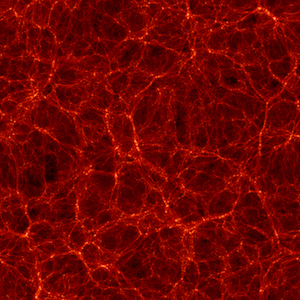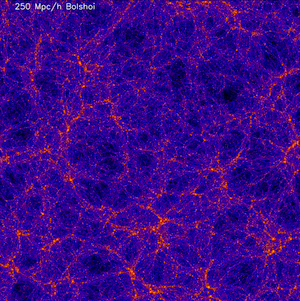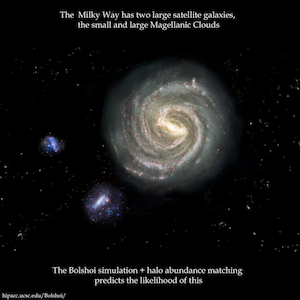Watch version with music
Visualization of the dark matter in 1/1000 of the gigantic Bolshoi cosmological simulation, zooming in on a region centered on the dark matter halo of a very large cluster of galaxies. Visualized by Chris Henze, NASA Ames Research Center. This visualization was narrated in the National Geographic TV special "Inside the Milky Way". It was used with the piece "Dark Matter" in Bjork's Biophilia concert.
The Bolshoi simulation is the most accurate cosmological simulation of the evolution of the large-scale structure of the universe yet made (“bolshoi” is the Russian word for “great” or “grand”). The first two of a series of research papers describing Bolshoi and its implications have been accepted for publication in the Astrophysical Journal. The first data release of Bolshoi outputs, including output from Bolshoi and also the BigBolshoi or MultiDark simulation of a volume 64 times bigger than Bolshoi, has just been made publicly available to the world’s astronomers and astrophysicists.
The starting point for Bolshoi was the best ground- and space-based observations, including NASA’s long-running and highly successful WMAP Explorer mission that has been mapping the light of the Big Bang in the entire sky. One of the world's fastest supercomputers then calculated the evolution of a typical region of the universe a billion light years across. The Bolshoi simulation took 6 million cpu hours to run on the Pleiades supercomputer—recently ranked as seventh fastest of the world’s top 500 supercomputers—at NASA Ames Research Center.
Large cosmological simulations such as the Millennium simulation are now the basis for much current research on the structure of the universe and the evolution of galaxies and clusters of galaxies. Due to significant advances in the measurement of the cosmological parameters and in the power and speed of supercomputers and simulation codes over the past half-decade since the Millennium cosmological simulation, the Bolshoi simulation is substantially better in resolution and accuracy. The Principal Investigators of the Bolshoi project, Anatoly Klypin and Joel Primack, and their colleagues anticipate that Bolshoi will become cosmology’s new benchmark simulation for making theoretical predictions that can then be tested against data gathered by observational astronomers. One of the first such predictions was the fraction of Milky Way type galaxies with satellite galaxies as bright as our galaxy's Large and Small Magellanic Clouds; the results were in excellent agreement with observations from the Sloan Digital Sky Survey.





